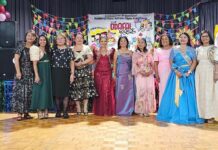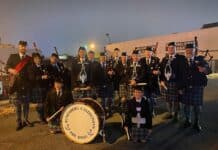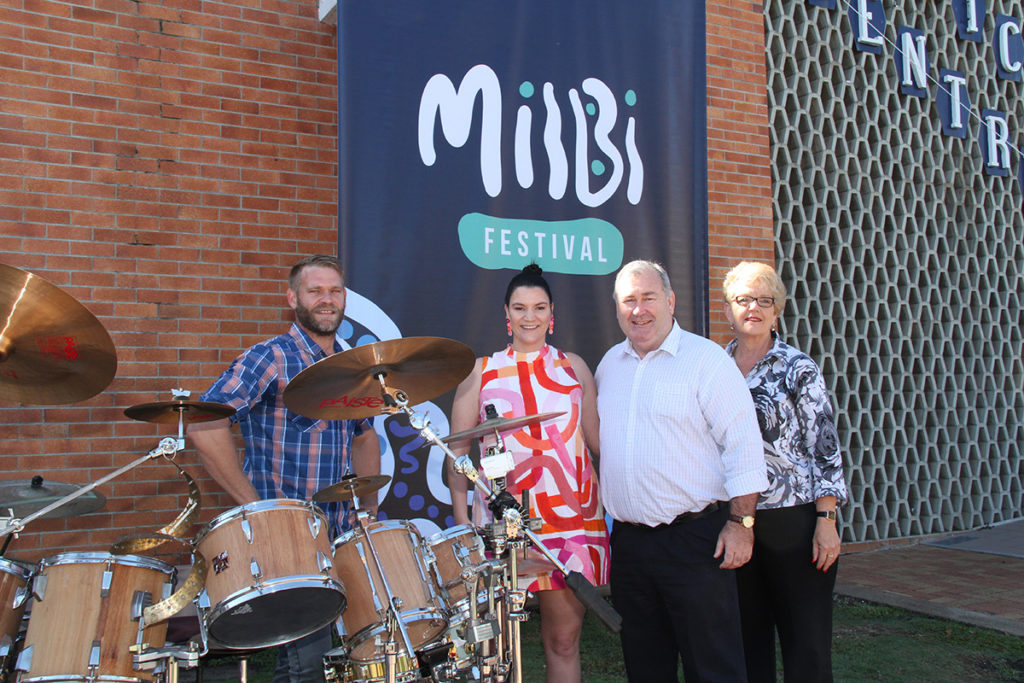
She has designed artwork at a state and national level but Rachael Sarra has shared the special connection the Milbi Festival has to her culture and her fondest childhood memories.
Earlier this month Rachael’s logo and branding for the inaugural Milbi Festival was unveiled revealing a contemporary and vibrant design.
Her work has been featured by Netball Queensland and Kmart but Rachael said being asked to work on a design for her hometown was exciting.
“I’m a very proud Goreng Goreng/Taribelang woman,” Rachael said.
“I connect culturally back to Bundaberg.”
Her grandma was born here and her dad, along with his nine siblings, grew up in the region.
Rachael was no stranger to what is arguably the region’s most recognised agricultural industry, with her grandma’s house right across the road from the sugar mill.
“I think some of my fondest memories now – that I didn’t think were so fond [at the time] – was the very distinct smell of sugarcane.
“I remember going to grandma’s house and it being such an overwhelming smell.
“But now I kind of reflect back on it and it’s something that ties me back to the area.
“Also I remember just sitting on the beach and eating mangoes with all my siblings and my cousins – there’s a few of us.
“It was a big turn out so just being around Bundaberg and the natural landscapes is really special.”
Rachael went on to follow her passion for design and art, combining the two in to a successful career.
But her culture and connection to culture is something that has never wavered.
“A lot of my work is working with creative briefs and bringing to light something like the Milbi Festival or working on personal work.
“It’s all about expressing my culture and connecting that to the environment in which we’re in now.
“I think it’s really important to portray culture through my artwork because a lot of people, they’re really looking to include culture.
“It’s really important to have those indigenous people leading those conversations and embedding culture into our everyday practices.
“A really strong connection to our past [means] we can understand that a lot better and the complexities of past but with that knowledge we can move together to the future in a more united front.
“We know each other history’s and we can really work together with each other strengths.
“I think that’s something really special and something we’re going to see more of.”
Milbi Festival design – a blend of culture, place and celebration
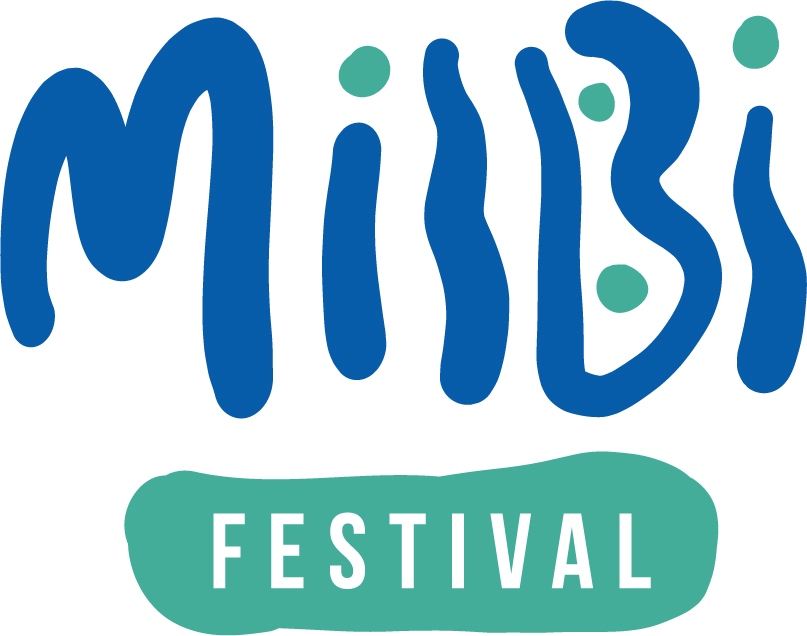
Rachael said the brief for Milbi Festival was “something really special because it is designed for on country”.
It called on her to create a contemporary and inclusive design celebrating arts and culture with a focus on Indigenous language and turtles – an icon of the region.
“I’ve done a lot of work around Australia but this in particular is very special I think.
“I’m a very spiritual person so I can kind of feel my ancestors around me in this environment and would hope they’re celebrating that we are including something like this in Bundaberg.
“Then to take it into a really contemporary space is really special as well.
“I think it’s going to be a brand and festival that is for everyone and everyone can find their journey in.
“That’s really special to kind of be involved in.”
Rachael said Milbi Festival was an opportunity for the entire community to come together and acknowledge and represent culture.
“I would hope it creates a legacy within Bundaberg.
“If we can get that consistency of acknowledging culture and embedding culture then our next generations can grow up where it’s not so foreign and it becomes embedded into our everyday life and we can really celebrate that.
“Aboriginal and Torres Strait islander culture has so many beautiful things that as Australia and as Bundaberg we can really learn from and celebrate.
“I do know that Bundaberg does a really good job of caring for country and that’s something that we are striving at and really doing well.
“I think getting to know and embed culture in that sense as well is going to be a way Bundaberg can lead from the front and kind of encourage other Councils to do the same.”
As part of her creative process Rachael said she engaged with different people around the area.
Her aim was to discover which themes they thought were important while also taking into account her upbringing and experience.
She said she found it easy to draw inspiration from the ocean and the Milbi.
“One of the things that stands out is obviously the turtle and Milbi is the Gurang word for turtle.
“The really interesting thing about turtles, they can navigate the oceans and come back to the same area they were born and kind of regenerate and give birth to their own little turtles.
“So it’s really special to have that cycle embedded into the brief and the idea that we can go away but also return home.”
Breaking down the elements
The logo
The Milbi Festival logo sees the word Milbi represented in a fluid form.
“It represents the fresh water and the salt water coming together,” Rachael said.
“Instead of overtly representing a turtle I’ve represented that with different coloured dots.
“It’s that idea that turtles can navigate and return home so it functions like a logo but it still has that really strong connection to turtle and to our surrounding environment.
“I think people can kind of relate to it in different ways and engage with it in different ways.”
To complement the logo, Rachael designed a range of elements that have strong ties to her culture and the festival’s ethos.
“With the elements that go with the logo it’s a design to be quite functional and diverse so a lot of the elements represent common themes of the festival.
“There’s diversity, celebration, there’s community coming together, really strong themes that people can connect to.
“They’re all created in a very different way and an engaging way that you can kind of have that flexibility to really push the Milbi brand.
“Around every corner you’re sort of invited to celebrate something new.”
Connections
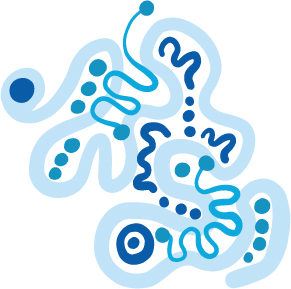
In the Milbi Festival design Rachael wanted to include an element to celebrate the inclusive nature of the event.
“Connections is a really beautiful thing.
“I think we can have connection in so many different ways, we can have connection to people, to family, to place in particular, which is a very strong theme in this festival.
“That word connection is a word that really brings people together.
“It’s not kind of separating people but you know celebrating that unity.
“So it’s in a special place like Bundaberg for the Milbi festival.”

Exploration
Rachael said Milbi Festival was a chance to bring arts, culture, people and place together.
“I think it’s an opportunity for everyone to take a few steps and understand culture a little bit more and really get to know Bundaberg in a different lens then what might have been here before.
“I think it’s a really special opportunity to see what’s next for Bundaberg and really celebrate the place.”
Community

Rachael said community was one of her favourite elements “because I think that’s what we’re really celebrating”.
“Bundaberg has such a beautiful community made up of people with diverse backgrounds.
“It’s about creating an environment that’s inclusive of everyone and really celebrating what makes Bundaberg so special.”
Rachael’s career goes from strength to strength
When the Milbi Festival brief came across Rachael’s desk, she couldn’t believe her luck.
“I feel like I have a career highlight and I think to myself nothing can get better than this and then something else happens.
“It’s just a really exciting kind of time.”
You may even have seen her designs on the netball court.
“Netball Queensland and the Queensland Firebirds asked me to design their Indigenous round dress so that was really special.
“Queensland Firebirds encompass all of Queensland which is very unique to that team.”
She has also worked with Kmart.
“Just recently I had my artwork on two buses.
“It’s kind of surreal to see it driving around.
“Any time I see my work come to life its really special and that’s kind of a cool way to connect culture to our environment and our people.”

